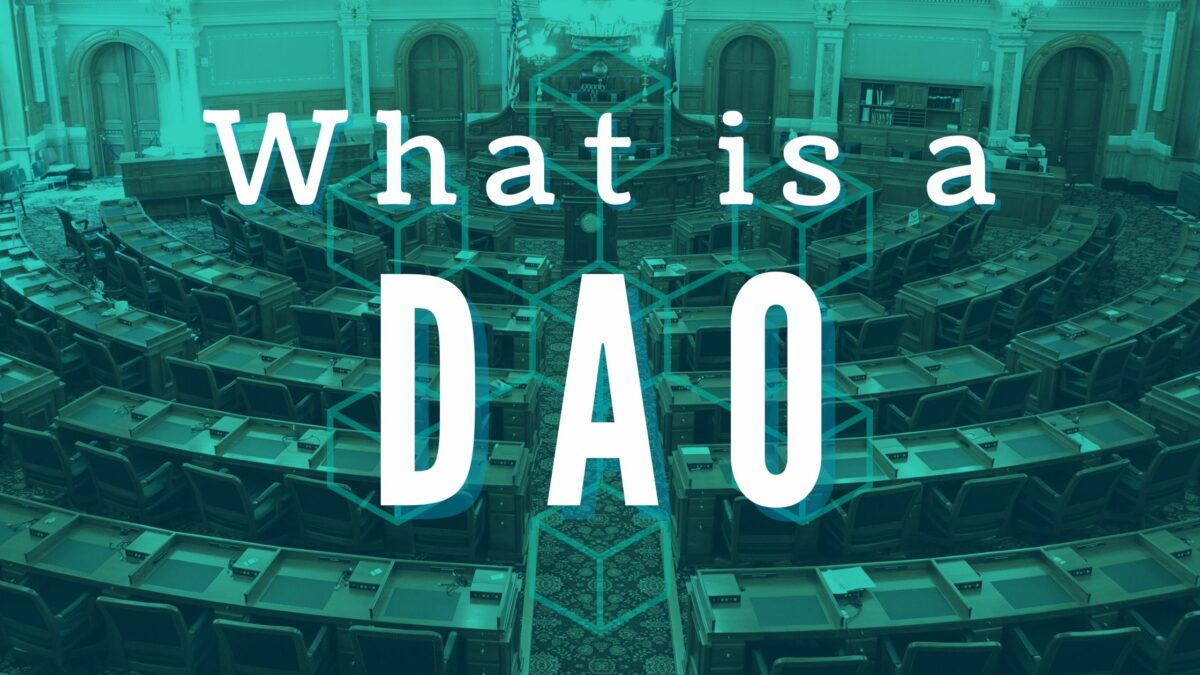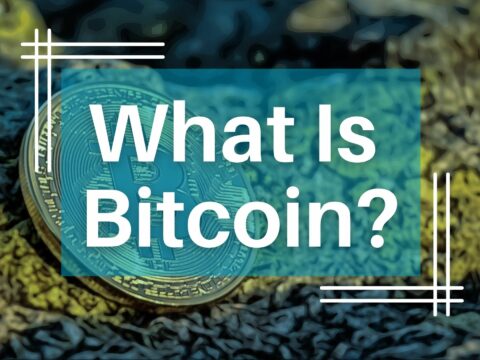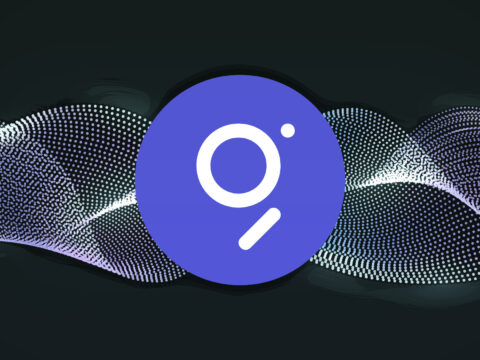
Introduction
Decentralized Autonomous Organizations (DAOs) have become in the world of decentralization, especially after blockchain-based currencies, like Bitcoin, entered the financial world. DAOs take advantage of smart contracts, and a series of new crypto projects have been launched to take full advantage of this architecture.
What is a DAO?
As its name suggests, a Decentralized Autonomous Organization (DAO) provides an autonomous mechanism that represents the organization of a decentralized network. Depending on how it is structured, a DAO could serve different functions, from fundraising, or incentive distribution to governance voting or other shared purposes.
How Did the DAO Come About?
The first idea came from a structure known as a Decentralized Autonomous Corporation (DAC), which was introduced a couple of years after Bitcoin hit the world in 2008.
At that time, a DAC was merely a topic shared among private forums of early crypto holders, who interchangeably switched back and forth between decentralized and distributed networks.
What is a DAC?
A DAC is a fully automated network, with a distributed community that can execute contracts and processes without the need for a central authority. It is completely self-sufficient and managed by its members, which makes it more decentralized than other traditional organizations.
Rather than specifically focusing on blockchain, the initial DAC concept aimed at building an incorruptible, publicly auditable corporate governance that used tokenized tradable shares for distributing dividends.
To avoid being manipulated by any men, it was run by open-source software interconnected with all stakeholders’ computers on the network. Anyone who bought a company’s stocks could become its stakeholder, reserving their rights to participate in the decision-making and share its profit.
What is the Purpose of a DAC?
The DAC concept pointed out one ideal solution to fight against bureaucracy and the principal-agent dilemma. People believed sharing the power while maintaining anonymity would enhance the fairness and transparency of transactions, hence encouraging more users to join the network.
Though it was supposed to be linked with corporate governance, DAC drew substantial attention from crypto advocates, since it perfectly matched the inherent nature of blockchain.
Since 2013, the world has witnessed the emergence of Decentralized Applications (DApps), then the transformation of Decentralized Autonomous Organizations (DAOs) was raised by Buterin along with the debut of Ethereum’s White Book.
The DAO Hack on Ethereum
After Ethereum entered the markets in 2015, following a lot of hype in the community, in 2016, one unique project with the exact name “The Decentralized Autonomous Organization” was launched to provide digital autonomous means for venture capital funding and management.
The project caught the eyes of everyone for successfully gathering $150 million USD via crowdfunding after four weeks of its token sale. Unfortunately, a programming hole allowed hackers to break into the system and take away $50 million USD worth of tokens.
Although the team managed to get the money back, the incident led to a dead-end for the DAO blockchain. Shortly afterward, their miners and holders created a hard fork that resulted in the Ethereum blockchain that exists today.
The DAO Takes Root
Today, DAO mainly refers to a type of organization mechanism on an existing blockchain network by utilizing smart contracts, rather than establishing a blockchain itself, as in the case of 2016.
It’s obvious to see that the revolution of ERC smart contracts is the premise for the popularization of DAOs. Thanks to a smart contract’s ability to verify and record transactions, all network operational activities can be deployed effortlessly and transparently without any intervention from third parties.
Smart contracts are the most important key feature that allows a DAO to exist, as all members are equally recognized and treated based on their participation and contributions to the community.
How Does a DAO Work?
The DAO structure inherits the core of DAC philosophy when forming a network as the governance power is split up among its stakeholders with no central members or executive managers, at least in the vast majority of cases.
It is adjusted to adapt blockchain technology and all decentralized platforms’ functionalities in the way that the developers choose, based on its purpose.
The most distinctive feature of DAO compared with the original DAC is the adoption of cryptographic assets and smart contracts, which allows for more functionality to be utilized on the blockchain platform.
From the first DAC and The DAO projects, a variety of similar services have come onto the scene. Aragon, DAOstack, DAOhaus, and Colony, are among some names inspired by the DAO model that have opted to utilize it and create virtual democracy on the decentralized internet.
Regardless of the different terminologies used, all those DAOs still stick to the principles their predecessors originally proposed.
Here are some of the typical traits of a DAO:
DAO is set up and run online, through the internet and blockchain. It is open to all users to join and share the self-governance mechanism. That means no management bodies, no certificates, and no physical agreements at all. Network members are not bound to any legal obligations but run the operation themselves towards the same goals.
A DAO is written and deployed on an open-source blockchain. At the moment, Ethereum networks with smart contract capabilities seem the most used. To increase the transparency of a platform, most of the projects are launched on public chains.
All network functions are processed and determined by a set of rules, which are verified and recorded by smart contracts. There are no exceptions. Smart contracts will self-execute whenever a decision is made on the network, based on the programmed rules, not in accordance with the will of an individual or a party.
A DAO’s governance is independent of its main network database control. This is crucial, as it creates self-governance without the manipulation of any single entity, including itself. Other than that, a DAO also continues to maintain transparency, decentralization, and security.
The Purpose of a DAO / Governance Tokens
DAO projects are built, and then enter the funding phase, in which the native governance tokens will be released to the community.
A DAO token always plays an indispensable role in a DAO model. It generally serves two main purposes.
DAO Token for Voting Power
Most importantly, anyone who owns a DAO / governance token has the right to vote for major decisions on the network. Generally, the more tokens you have, the more votes are granted to you when it comes to designating network tasks and decisions.
DAO Token for Profit and Reward Distribution
Also, it can be used for profit distribution and system rewards based on certain activities of members. On a DAO, anything you can get as a reward is proportionate to how much you have done and contributed to the community.
You are also entitled to make proposals to raise your voice over future direction and operation. Similarly, if a member proactively takes part in the on-chain platform’s activities, such as staking to the pool, and providing liquidity to the network, he/she will receive a proportional reward in governance tokens.
In short, after a DAO is fully funded and launched, no one (including its own creators), but thousands of users are the true masters. All it requires is to purchase the native tokens and make a vote. Decisions on DAOs are incorruptible and only rely on the majority of users’ approval.
How is a DAO Superior to Traditional Organizations?
Existing organizational structures have always faced criticism for their latency, bureaucracy, and principal-agent dilemma.
That’s because in those types of operations, managerial bodies often are the minority, and, in many cases, they don’t work in a way that benefits the common interests of the majority.
However, the top levels have an outsized amount of power and can influence other people. Hence, under many circumstances, the power is dominated by the top, and benefits are not equally divided among all participants.
DAOs resolve these problems by eliminating entirely the involvement of a central governance body. Instead, DAO members will take over decision-making through the DAO voting process. Everything is executed automatically by computer programming and always follows majority rules.
In that way, DAO prevents any acts that go against the common benefits of the community. The most remarkable thing that enables a DAO mechanism to function is smart contracts.
Thanks to smart contracts, DAO networks can operate without a management entity. Not only does the DAO reserve users’ governance power, but it also enhances speed and efficiency in processing.
Unlike top-down management – the way traditional organizations waste a lot of time – smart contracts are able to finish transactions instantly, store data on the public chain, and cut down on basically every cost.
More Oversight and Accountability
DAO models also demonstrate outstanding advantages in terms of accountability.
Even though traditional organizations are compliant with legal frameworks and are supposed to be protected by multiple layers of redundancy, the reality isn’t in line with these ideals.
Since power is concentrated at the top, the privileged few can easily modify contracts, or even buy other people to break the law. In fact, small stakeholders may not have the knowledge needed to review actions taken by management, and ensure their rights are protected.
In many cases, it’s too difficult for existing power structures to trace the evolution of conflicts when they occur. Eventually, these issues end up in litigation, which is terrible from an economic perspective.
With DAOs, these obstacles have been addressed and can be overcome easily. Even without any bilateral or multilateral agreements, smart contracts ensure that there is a reliable record of everything that happens in the organization.
This powerful tool, designed for self-execution without being affected by anyone, is the main reason that the DAO model can build a community of trust among people who do not know each other.
Better Transparency
All transactions are recorded by smart contracts and saved on the main chain, making it accessible to anyone for auditing. It’s easy to understand why DAOs are in line with the commitment of blockchain to guarantee the highest security and transparency possible in a digital system.
In contrast, maintaining anonymity across the whole network provides a high level of protection, which prevents any attempts to influence other users so as to change the operation in favor of some specific groups.
Additionally, the vast majority of DAOs are run on open-source code, meaning every member can check the programming and propose modifications by voting.
Unique Rewarding System in Utility Tokens
Another difference that DAO models bring to users is their unique rewarding system in utility tokens. This incentivization mechanism helps save effort for network expansion, as participants will actively contribute to the common goals of the platform.
With new Ethereum updates introduced recently, DAO networks also improve their scalability and interoperability and are likely to be easier to connect with multiple chains. This level of connectivity far exceeds the capabilities of traditional organizations and is another major perk of the DAO structure.
The Future of Decentralized Autonomous Organizations (DAOs)
The Decentralized Autonomous Organization (DAO) model is likely just starting to enter its long-term development cycle. In addition to numerous platforms that use it, dApps with DAO-model-as-a-service have been developed. It has also been used by the gaming and entertainment industries, among others.
In a world where the role of big entities is fading, and peer-to-peer transactions are emerging as a normal way to do business, the DAO model and its applications are growing in both use, and potential for development.
In the future, DAO will increasingly leverage technologies such as Artificial Intelligence or IoT beacons, as well as other data optimization devices.
A future of increased autonomy is part of what DAOs engender, and in that scenario, not only in blockchain but DAOs will also be deployed in businesses to automate processes and replace humans.
Merchants will be able to automatically receive requests, classify orders, contact suppliers, create invoices, set delivery dates, and send packages to customers. All of this is possible with the technology we have today and the build-out that makes it a reality is happening in many nations.
Conclusion About DAO
As platforms are becoming more complex via integration and interconnection, real-world solutions and technologies will be faster, cheaper, and more accessible. For the DAO itself, it’s critical to continue enhancing smart contract programming and ensure the utmost security possible.
The DAO was more or less born with Ethereum and the smart contract. However, the power of the architecture will likely eclipse the platform that gave birth to it and create a host of new decentralization in the developed world, which can take full advantage of its utility.





